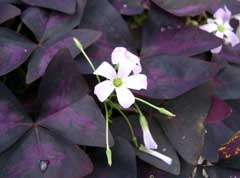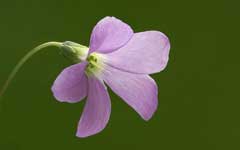 |
|
http://commons.wikimedia.org/wiki/User:KENPEI |
 |
| http://commons.wikimedia.org/wiki/User:Richard_Bartz |
Translate this page:
Summary
Bloom Color: Lavender. Main Bloom Time: Mid spring. Form: Spreading or horizontal.
Physical Characteristics

 Oxalis triangularis is a PERENNIAL growing to 0.2 m (0ft 8in) at a medium rate.
Oxalis triangularis is a PERENNIAL growing to 0.2 m (0ft 8in) at a medium rate.
See above for USDA hardiness. It is hardy to UK zone 9 and is frost tender. It is in leaf from June to October, in flower from June to September. The species is hermaphrodite (has both male and female organs) and is pollinated by Insects.
Suitable for: light (sandy) and medium (loamy) soils and prefers well-drained soil. Suitable pH: mildly acid, neutral and basic (mildly alkaline) soils. It can grow in semi-shade (light woodland) or no shade. It prefers dry or moist soil. The plant can tolerates strong winds but not maritime exposure.
UK Hardiness Map
US Hardiness Map
Synonyms
Plant Habitats
Cultivated Beds; South Wall. In. West Wall. In.
Edible Uses
Edible Parts: Flowers Leaves Root
Edible Uses:
Leaves - raw or cooked[K]. A pleasant acid flavour[K]. Use in moderation, see notes at top of sheet, Flowers - raw[K]. A pleasant and decorative addition to the salad bowl[K]. Most children really adore eating the flowers raw[K]. Root - raw or cooked. The root is up to 5cm long and 15mm wide, it is crisp and juicy with a pleasant sweet mild flavour[K].
References More on Edible Uses
Medicinal Uses
Plants For A Future can not take any responsibility for any adverse effects from the use of plants. Always seek advice from a professional before using a plant medicinally.
None known
References More on Medicinal Uses
The Bookshop: Edible Plant Books
Our Latest books on Perennial Plants For Food Forests and Permaculture Gardens in paperback or digital formats.

Edible Tropical Plants
Food Forest Plants for Hotter Conditions: 250+ Plants For Tropical Food Forests & Permaculture Gardens.
More

Edible Temperate Plants
Plants for Your Food Forest: 500 Plants for Temperate Food Forests & Permaculture Gardens.
More

More Books
PFAF have eight books available in paperback and digital formats. Browse the shop for more information.
Shop Now
Other Uses
References More on Other Uses
Cultivation details
Landscape Uses:Container, Ground cover, Rock garden, Specimen. Easily grown in a sandy soil in a warm dry position in sun or light shade[1, 200]. Grows well in a dry shady corner[260]. Plants are not very cold-hardy in Britain, tolerating temperatures down to about -3°c[260]. Given a suitable position, it should succeed outdoors at least in the mildest parts of the country[K]. It should be possible to grow it even in the colder areas by digging up the bulbs in the autumn after the top growth has been cut down by frosts, storing them in a cool but frost-free place and replanting them in mid to late spring[K]. There are two main forms of this plant, ssp triangularis has smaller, green leaves and is, in our experience, slightly the hardier of the two. Ssp papilionacea has larger, dark purple leaves and is considered the more ornamental[K]. Special Features:Attractive foliage.
References Carbon Farming Information and Carbon Sequestration Information
Temperature Converter
Type a value in the Celsius field to convert the value to Fahrenheit:
Fahrenheit:
The PFAF Bookshop
Plants For A Future have a number of books available in paperback and digital form. Book titles include Edible Plants, Edible Perennials, Edible Trees,Edible Shrubs, Woodland Gardening, and Temperate Food Forest Plants. Our new book is Food Forest Plants For Hotter Conditions (Tropical and Sub-Tropical).
Shop Now
Plant Propagation
Seed - best sown as soon as it is ripe in a cold frame. The seed from one subspecies does not always come true - on at least one occasion we have hade the purple-leaved form grow from seed of the green leaved form that had definitely not been cross-pollinated[K]. Prick out the seedlings into individual pots when they are large enough to handle and grow them on in a greenhouse for their first winter. Plant them out in late spring or early summer. Division in spring. Larger divisions can be planted out direct into their permanent positions. We have found that it is better to pot up the smaller divisions and grow them on in light shade in a cold frame until they are well established before planting them out in late spring or early summer.
Other Names
If available other names are mentioned here
Native Range
SOUTHERN AMERICA: Brazil (Bahia, Ceará, Goiás, Mato Grosso, Minas Gerais, Pará, Paraná, Pernambuco, Rio de Janeiro, Rio Grande do Sul, Santa Catarina, São Paulo), Bolivia (Cochabamba, Chuquisaca, La Paz, Santa Cruz, Tarija), Argentina (Catamarca, Corrientes, Formosa, Jujuy, La Rioja, Misiones, Salta, Santiago del Estero, Tucumán), Paraguay (Amambay, Boquerón, Central, Concepción, Cordillera, Guairá, Alto Paraguay, Paraguarí, San Pedro, Chaco, Nueva Asuncion)
Weed Potential
Right plant wrong place. We are currently updating this section.
Please note that a plant may be invasive in one area but may not in your area so it's worth checking.
Conservation Status
IUCN Red List of Threatened Plants Status :

Growth: S = slow M = medium F = fast. Soil: L = light (sandy) M = medium H = heavy (clay). pH: A = acid N = neutral B = basic (alkaline). Shade: F = full shade S = semi-shade N = no shade. Moisture: D = dry M = Moist We = wet Wa = water.
Now available:
Food Forest Plants for Mediterranean Conditions
350+ Perennial Plants For Mediterranean and Drier Food Forests and Permaculture Gardens.
[Paperback and eBook]
This is the third in Plants For A Future's series of plant guides for food forests tailored to
specific climate zones. Following volumes on temperate and tropical ecosystems, this book focuses
on species suited to Mediterranean conditions—regions with hot, dry summers and cool, wet winters,
often facing the added challenge of climate change.
Read More
Expert comment
Author
A.St.-Hil.
Botanical References
Links / References
For a list of references used on this page please go here
Readers comment